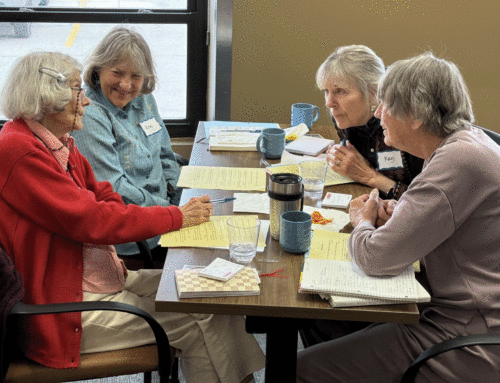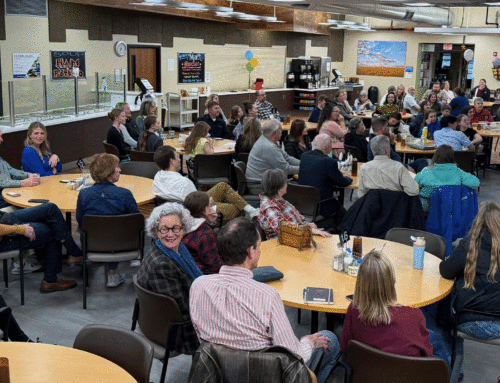When Ashleigh Snoozy, esteemed Sheridan Press editor, asked if she could write a series of articles on the CVC, I was delighted. How can you beat above-the-fold publicity on three different days about your organization? Obviously, an opportunity was lost not to have my puppy, Lloyd and I featured in a large photograph but Julie, my Project Coordinator, was prominently featured. Right next to the headline about the rising number of women in prison. Thank you, Ken Thorpe, for pointing that out.
Regardless, it was a phenomenal opportunity for the work of 20 years to be explained and illustrated to an audience that probably had no idea we even existed, much less what we did. Heck, my husband struggles to explain what the CVC does.
Ashleigh asked me to create a timeline for the CVC starting with its creation, major projects, trainings, and initiatives to date. I thought that would be a breeze until I started digging in. Twenty years, three directors, six staff, at least 75 members of the advisory board, four Sheridan College presidents, and five locations were just the beginning.
While researching, I reflected on the importance of an origin story. I frequently teach board members to find out their nonprofit’s origin story because within it are the seeds of the passion and vision for change that started it all. If you don’t know why you exist, how can you know the purpose, importance, or direction of your organization’s work?
The Food Group’s origin story is a perfect example. In a nutshell, Laura Sands, a mother in Story, figured out that her children were giving other kids their extra bagels on the school bus in the morning. When she started asking teachers about childhood hunger, she universally heard that it was an issue and they had drawers of snacks to prove it. Laura called a bunch of her friends, informed them of this, and together, they created The Food Group and began providing food to kids on the weekends.
The Sheridan Community Land Trust (SCLT) was created from feedback in a 2006 community assessment. Sheridan County residents strongly valued land conservation and access to recreation opportunities. With that in mind, SCLT has become the sole entity in Sheridan County to hold conservation easements on private land, develop and enhance recreational opportunities, and preserve local history, all thanks to the will of its residents and a group of people who acted on those priorities.
Those are just two of the many nonprofits begun right here in our community. There are myriad examples of visionaries seeing a need and creating an organization to fill that void.
If you’re a member of the local chapter of a national organization, you should find out how it started. The idea for Habitat for Humanity began in a farming community in Georgia with the idea of “partnership housing,” allowing working families to serve with volunteers to build their homes. This is important information to have as you advance the mission now, decades later, in Sheridan, Wyoming.
As I dug through twenty years of minutes, director’s reports, newsletters, and so much more, here’s what I learned about the trajectory of the CVC from its origin story – it’s a dependable and solid straight line from our mission to our work. Engaging citizens to strengthen our community was where we began and today, we’ve only reinforced that mission – Investing in people to engage in and strengthen our community. That makes me proud of the work we’re doing and the work of all those who came before us.







Leave A Comment